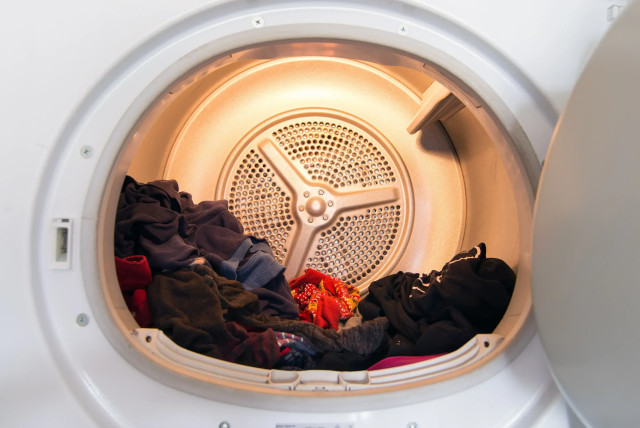10 laundry mistakes that damage clothes and drain your wallet

Here are some common laundry mistakes that lead to increased wear and tear on clothes, as well as higher electricity expenses.
Like the never-ending supply of oil in a can, our laundry baskets always seem to be overflowing, regardless of our family size.
Washing clothes is a daily task for most of us, but it's disheartening to realize that we could be preserving our favorite garments and cutting down on electricity and water costs if only we knew how to do laundry correctly.
With advancements in fashion and fabric technology, our laundry practices need to evolve to suit the modern era.
Nicky English, the head of design and business development at AJG Fashion Consulting, shed light on the common misconceptions and outdated habits that are wreaking havoc on our wardrobes.
These mistakes not only damage our clothes but also inflict an unexpected monthly expense on our wallets.
Here are 10 mistakes that many of us make when it comes to laundry:
1. Utilize the Power of the Sun: Drying your clothes in the sun not only saves energy but also naturally bleaches and disinfects them. Hang white fabrics in direct sunlight to enhance their brightness, and keep colored ones in the shade to prevent fading. Relying solely on electric dryers is a financial disaster, as they consume significant amounts of energy. Air drying whenever possible is not only cost-effective but also reduces fabric wear and tear.
2. Avoid Overloading the Washing Machine: Many of us are guilty of stuffing the washing machine to its limits. Overloading leads to inefficient washing, necessitates additional cycles, and results in higher electricity consumption. Moreover, clothes packed tightly in the machine won't move freely, leading to an uneven wash.
3. Pay Attention to Fabric Care Labels: Don't overlook those tiny labels on your clothes - they're not just for decoration. Ignoring the fabric care instructions can result in inappropriate washing settings, increased electricity consumption, and fabric damage. Always refer to the care label before loading your clothes into the washing machine to preserve their longevity and appearance.
4. Use the Recommended Amount of Detergent: Excessive use of detergent, softener, and washing powder doesn't make your clothes cleaner. On the contrary, it gradually destroys the fabric and may require additional washing cycles, wasting water and energy. Follow the recommended dosage for optimal results.
5. Sort Clothes Properly: Sorting involves more than just separating light and dark clothing. Pay attention to the fabric types and wash garments with similar textures together. Avoid washing delicate fabrics with heavy items, as this can cause damage. Neglecting proper sorting may lead to the need for repeated washing, resulting in unnecessary electricity consumption.
6. Opt for Cold Water When Possible: Hot water isn't always necessary for washing. Using cold water saves energy, helps maintain fabric color, and prevents shrinkage.
7. Be Selective with Fabric Softener: Fabric softeners provide a pleasant softness to clothes, but they're not suitable for all fabrics. Avoid using them on sportswear and microfiber towels, as they can damage the fabric and reduce its moisture-repelling and cleaning abilities.
8. Remember to Turn Clothes Inside Out: Turning clothes inside out before washing isn't just a myth. It helps preserve color and protects prints from friction and damage during the washing process.
9. Don't Wash After Every Wear: While freshly laundered clothes are appealing, washing garments after minimal wear contributes to fabric wear and unnecessary electricity consumption. Consider airing out clothes or spot cleaning if they've only been worn briefly. This approach maintains fabric quality over time and reduces water and energy consumption.
10. Take Action and Do the Laundry: Armed with these tips, it's time to tackle your laundry with confidence. Implementing proper laundry practices will not only extend the life of your clothes but also save you money in the long run.
Elevate your laundry game and reap the rewards of well-maintained clothes and a healthier wallet.
Jerusalem Post Store
`; document.getElementById("linkPremium").innerHTML = cont; var divWithLink = document.getElementById("premium-link"); if (divWithLink !== null && divWithLink !== 'undefined') { divWithLink.style.border = "solid 1px #cb0f3e"; divWithLink.style.textAlign = "center"; divWithLink.style.marginBottom = "15px"; divWithLink.style.marginTop = "15px"; divWithLink.style.width = "100%"; divWithLink.style.backgroundColor = "#122952"; divWithLink.style.color = "#ffffff"; divWithLink.style.lineHeight = "1.5"; } } (function (v, i) { });



